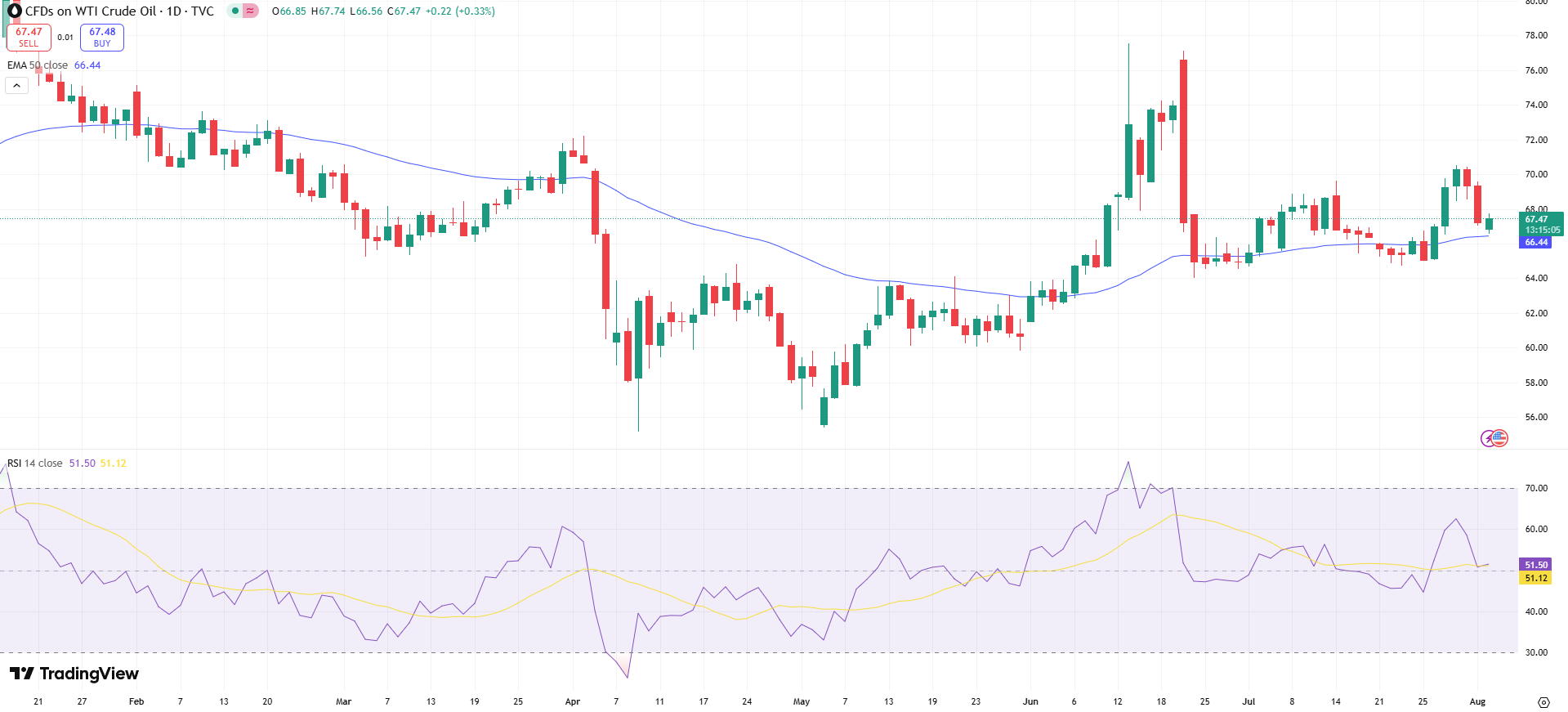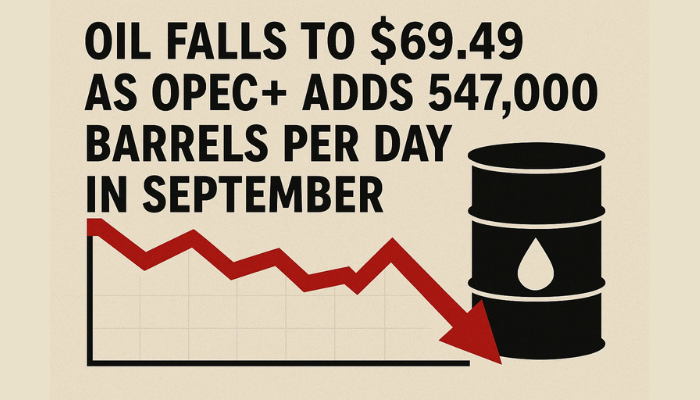Global oil benchmarks declined modestly on Monday following an OPEC+ decision to ramp up production by 547,000 barrels per day (bpd) in September. The move, widely anticipated by analysts, marks another step in the group’s effort to unwind its largest-ever output cuts amid recovering demand and tight inventories.
Brent crude slipped 0.26% to $69.49 a barrel, while West Texas Intermediate (WTI) shed 0.18% to $67.21, extending losses of around $2 from Friday’s session.
The latest supply boost reflects OPEC+’s strategy to regain global market share while maintaining a tight grip on price volatility. The overall increase—factoring in previous output rollbacks and a special allocation to the United Arab Emirates—represents about 2.4% of global oil demand, or roughly 2.5 million bpd.
However, Goldman Sachs analysts suggest the real increase from the eight members actively boosting output since March is closer to 1.7 million bpd, as some countries scale back after earlier overproduction.
Russian Oil Risks Cloud Supply Outlook
While OPEC+ adds barrels, geopolitical friction continues to stir uncertainty. U.S. President Donald Trump’s aggressive sanctions campaign against Russia is already disrupting flows of Russian crude to key buyers like India.
At least two Russian oil tankers originally bound for Indian refiners have rerouted, according to LSEG trade data. Analysts at ING warn that up to 1.7 million bpd could be at risk if India scales back purchases in response to U.S. pressure—potentially wiping out the expected global surplus for the remainder of 2025 and early 2026.
Despite the threat of 100% secondary tariffs, Indian officials insist oil imports from Russia will continue. This defiance signals that India is prioritizing energy security over political alignment, keeping markets on edge.
Key Supply Risks to Watch:
- U.S. sanctions may force Russian oil rerouting
- 1.7 million bpd at risk if India cuts Russian purchases
- OPEC+ could reverse planned output cuts if surplus shrinks
Demand Worries Persist Amid Tariff Uncertainty
Beyond the supply side, oil markets are also grappling with weak demand indicators and concerns over global economic growth. Friday’s disappointing U.S. jobs report added to fears that rising interest rates and high inflation are sapping consumption.

Moreover, Washington’s broadening tariffs are amplifying trade tensions. U.S. Trade Representative Jamieson Greer stated that the latest round of tariffs is likely to remain intact during ongoing negotiations.
These trade policies could dampen fuel demand, especially if they trigger retaliatory moves or reduce economic activity in key importing nations.
While oil markets absorb the latest OPEC+ adjustments, ongoing geopolitical risks and weak macroeconomic signals ensure that volatility is far from over.


